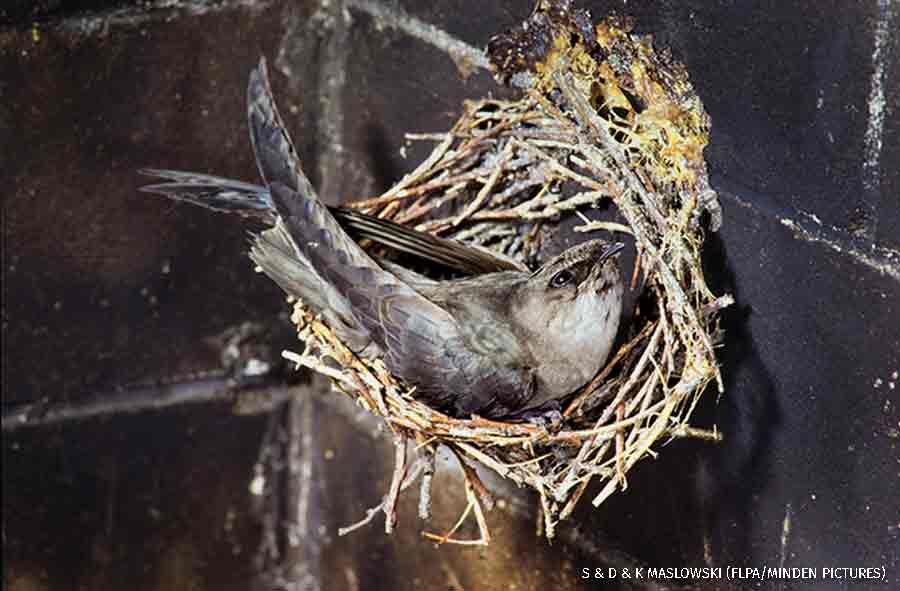Today, many houses are built with chimneys that use smaller metal flue pipes rather than clay liners. These metal flues can sometimes be death traps for animals, who cannot grip the slippery metal and may even fall into the fireplace. Before European settlement brought chimneys to North America, Chimney Swifts nested in caves, cliff faces, and hollow trees.
Swifts
The “flying cigar” silhouette of the Chimney Swift is a common sight all summer in the skies over eastern cities and towns. Lakes and rivers are especially good places to look for swifts, where they often forage along with swallows, which have broader wings and more fluid wingbeats. Be sure to keep an ear out for their distinctive, high-pitched chattering calls—they often call on the wing while foraging. During migration, thousands of swifts roost together in chimneys, funneling into them at dusk in spectacular tornado-like flocks. Large numbers of Chimney Swifts roost together in a single chimney during the nonbreeding season. There’s warmth in numbers: during cold nights, the temperature inside a chimney roost can be 70°F warmer than outside.
Swifts’ Nest in the Chimney
Nests
Swifts’ nests are small cup-shaped structures constructed of small twigs and glued to the chimney wall with saliva. They are not a fire hazard, being far too small for that, but should always be removed after the birds have left in the fall. This does the swifts a favor, both by removing bird parasites and the nest structure itself, which might be used by returning swifts, but could be unstable enough to collapse during the nesting period. Swifts do tend to return to the same nesting site year after year, if available.
Solutions
The rules regarding swifts in chimneys are simple. First, delay the annual cleaning until after the young have left the nest. Although you may hear the noises of young birds as they beg for food, these are only temporary and should be tolerated. Ask your chimney sweep to come back in the fall if swifts are in occupancy earlier in the season. Professional sweeps should know that swifts are protected under the Migratory Bird Treaty Act, and anyone who knowingly destroys birds or nests that might contain eggs or young can be fined or penalized. Finally, chimneys lined with metal should always be capped, as birds that enter these can easily become trapped.
Swifts’ Nest in the Chimney
Contact us
St John Chimney Sweeps Address 1613 Reed Rd D1, Pennington, NJ 08534 Proudly Serving Mercer County, Somerset County, Hunterdon County, & Surrounding Areas
Website http://www.stjohnchimneysweeps.com/
Email: stjohnchimneysweeps@verizon.net Phone Number: (609) 737-0133

